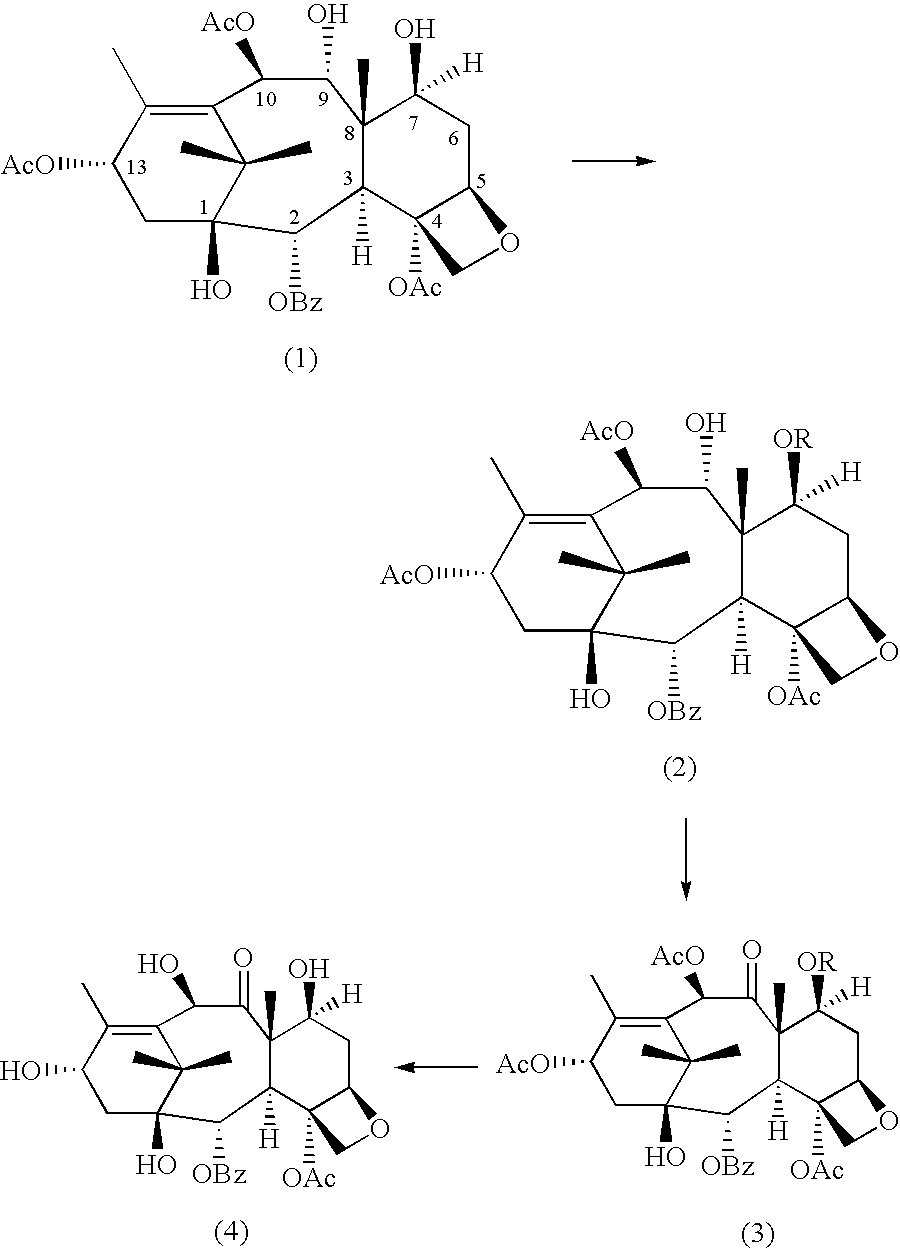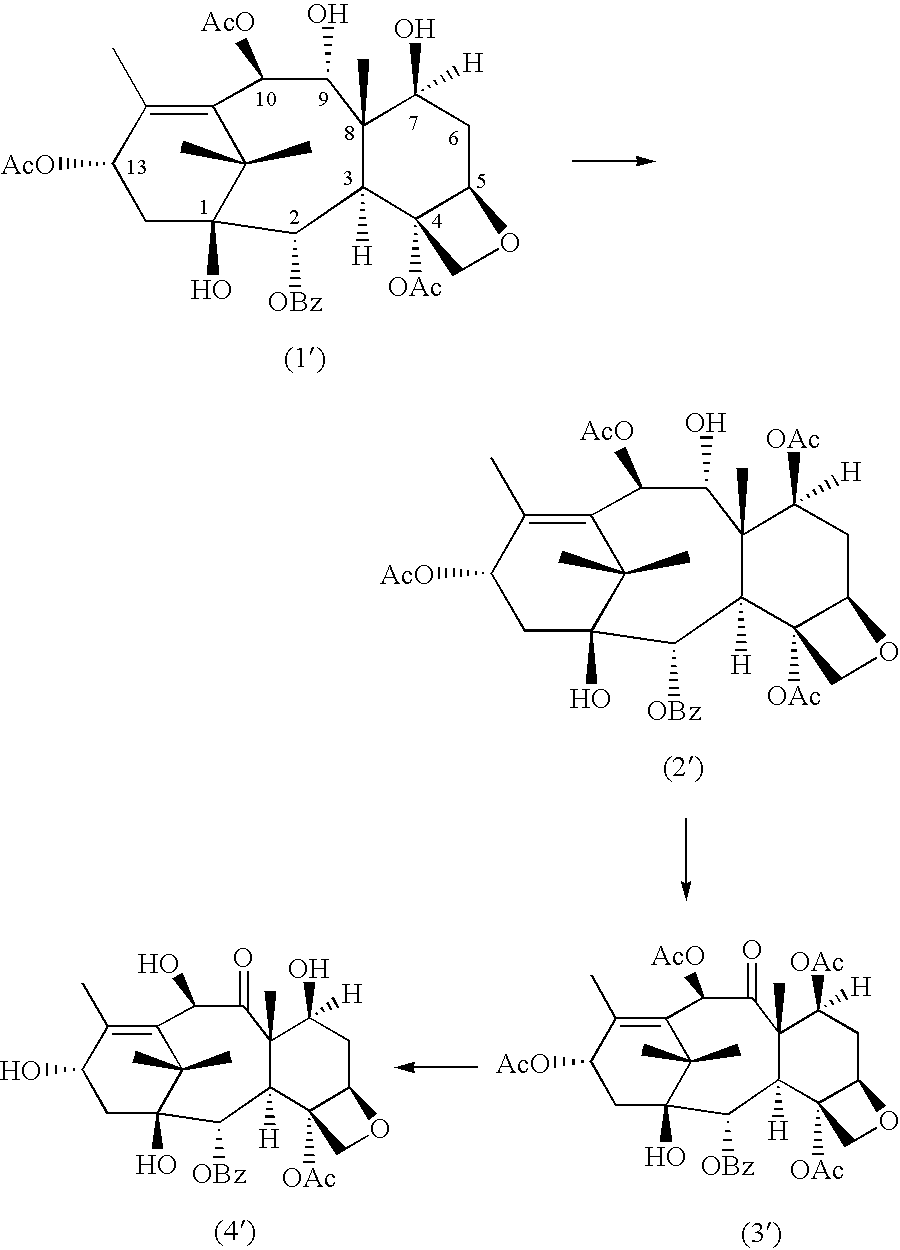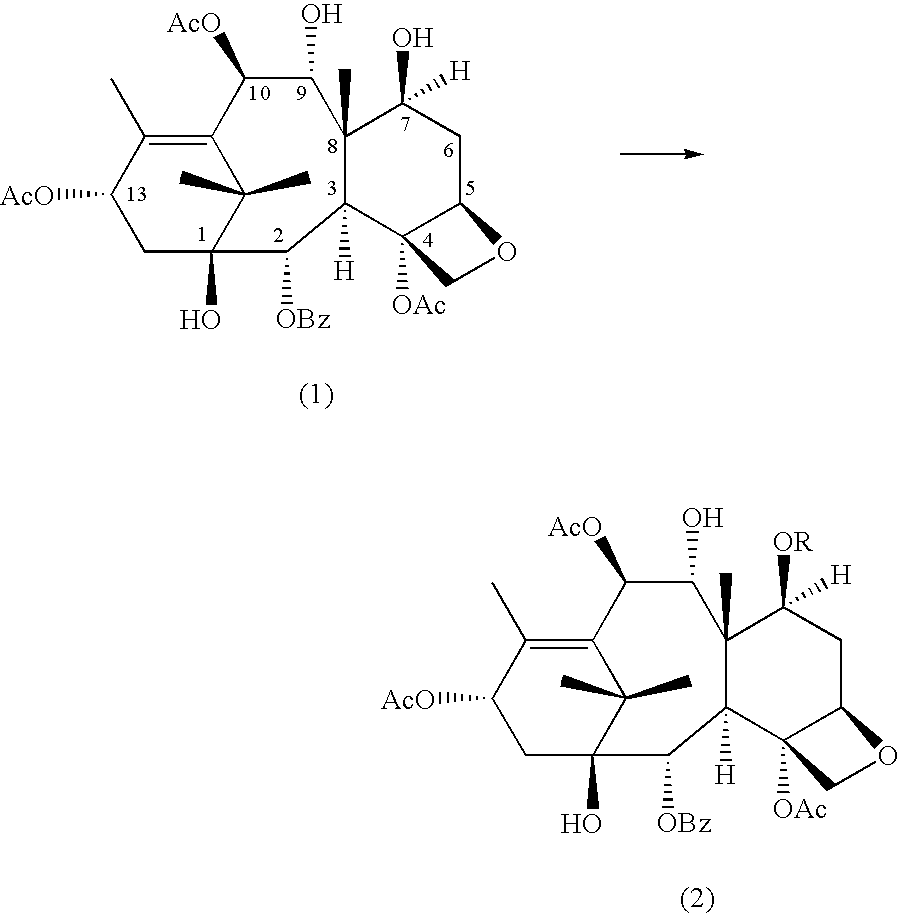Conversion 9-dihydro-13-acetylbaccatin iii into 10-deacetylbaccatin iii
a technology of acetylbaccatin and 9-dihydro-13acetylbaccatin, which is applied in the direction of organic chemistry, bulk chemical production, etc., can solve the problems of poor yield of finished products
- Summary
- Abstract
- Description
- Claims
- Application Information
AI Technical Summary
Benefits of technology
Problems solved by technology
Method used
Image
Examples
Embodiment Construction
Selective Protection of 7-hydroxyl Group of 9-dihydro-13-acetylbaccatin III
[0016] 3
[0017] Several experiments were carried out using a variety of reagents to produce 7-OH protected-9-baccatin III with different protecting groups in the 7-position. The results of the experiments are listed in Tables 1 and 2 (for the sake of simplicity, all tables are found at the end of this description).
[0018] Additional experiments were conducted in which R in the above formulae was an acetyl group. 4
[0019] In the method of producing 9-dihydro-7,13-diacetylbaccatin III, 9-dihydro-13-acetylbaccatin III (0 1 mmole) was dissolved in 2.5 mL of dry methylene chloride and cooled to -23.degree. C. using a slurry of CCl.sub.4 and liquid nitrogen. 0.6 mmole of dry pyridine and a catalytic amount of DMAP (5% in mole) were added to the mixture foilowed by 0.3 mmole of acetic anhydride. The mixture was stirred for 1 5 h and then the reaction was quenched by the addition of 5.0 mL of water. The mixture was pour...
PUM
 Login to View More
Login to View More Abstract
Description
Claims
Application Information
 Login to View More
Login to View More - R&D
- Intellectual Property
- Life Sciences
- Materials
- Tech Scout
- Unparalleled Data Quality
- Higher Quality Content
- 60% Fewer Hallucinations
Browse by: Latest US Patents, China's latest patents, Technical Efficacy Thesaurus, Application Domain, Technology Topic, Popular Technical Reports.
© 2025 PatSnap. All rights reserved.Legal|Privacy policy|Modern Slavery Act Transparency Statement|Sitemap|About US| Contact US: help@patsnap.com



